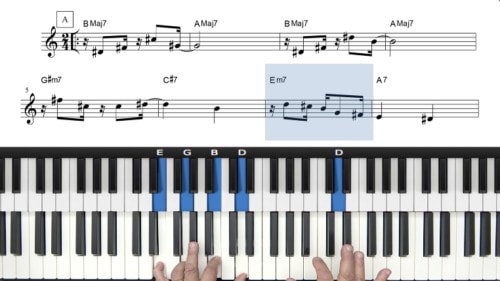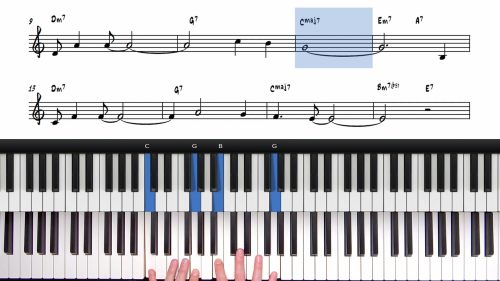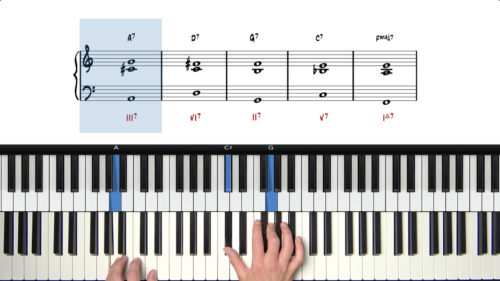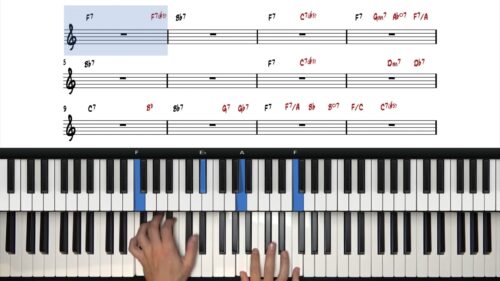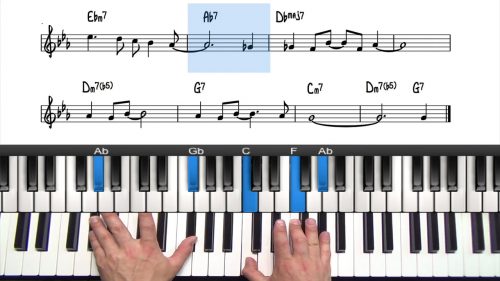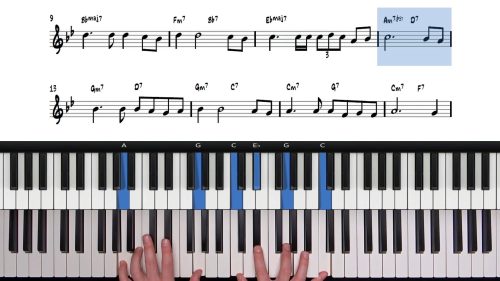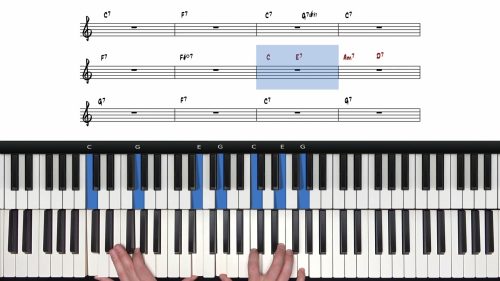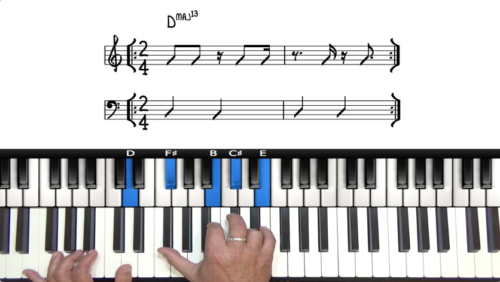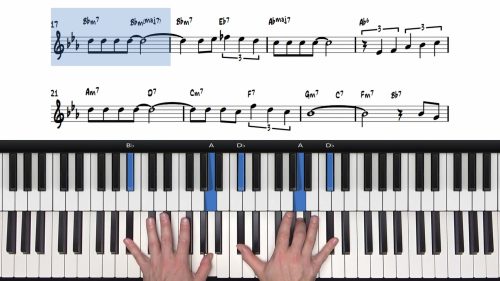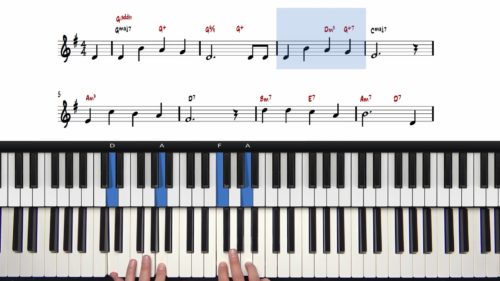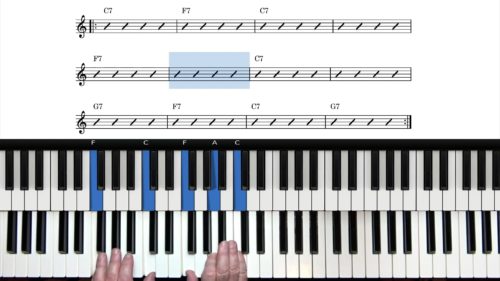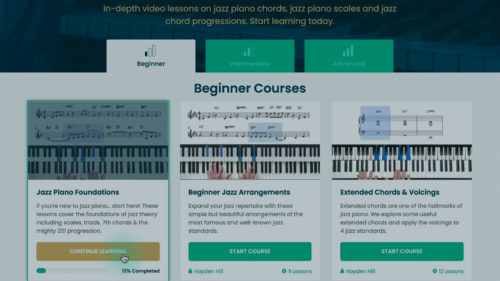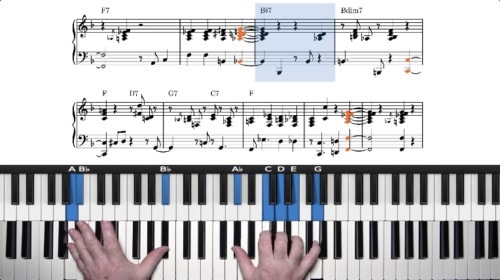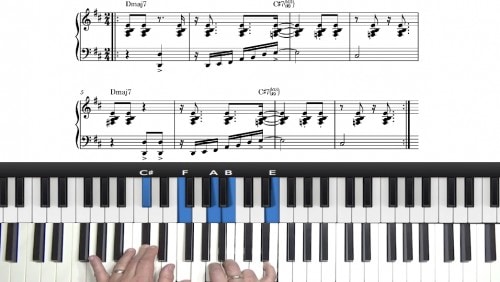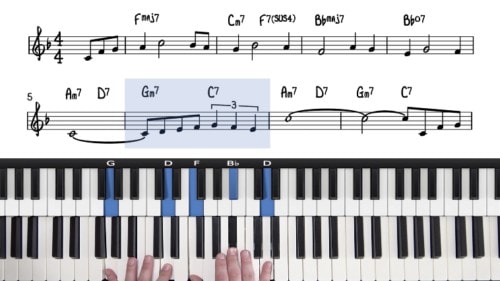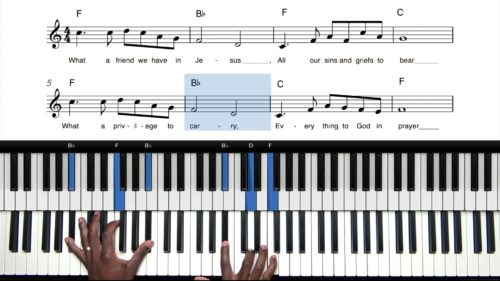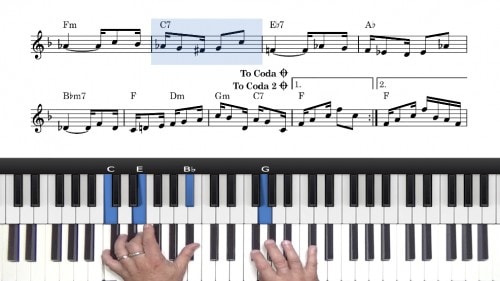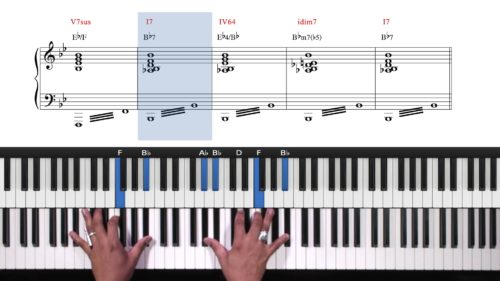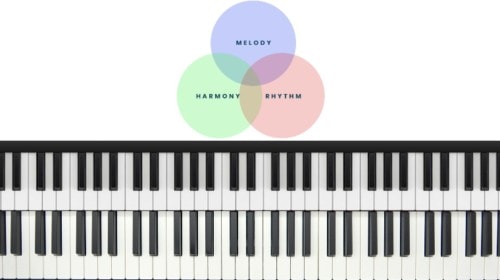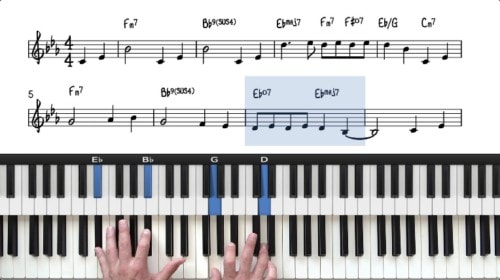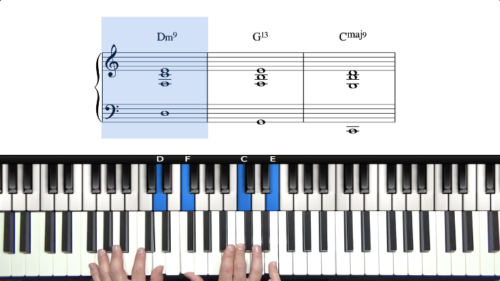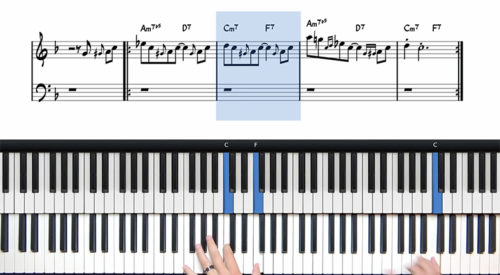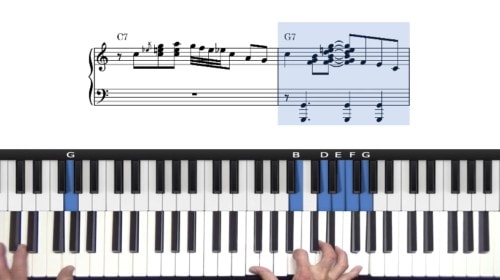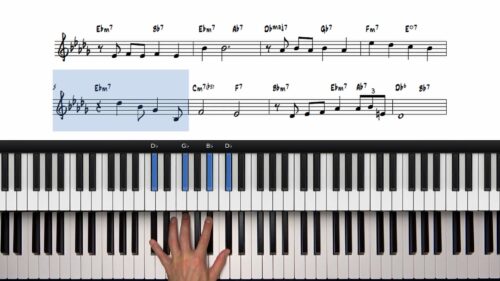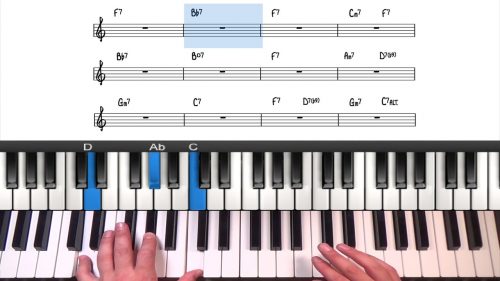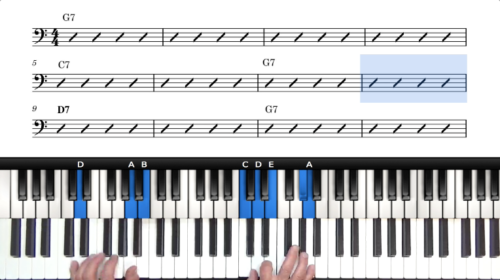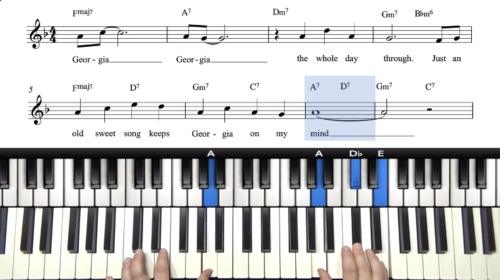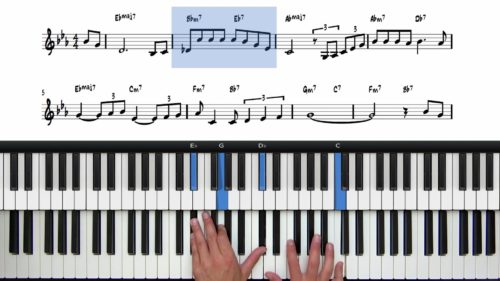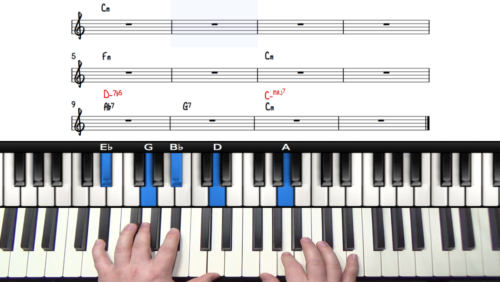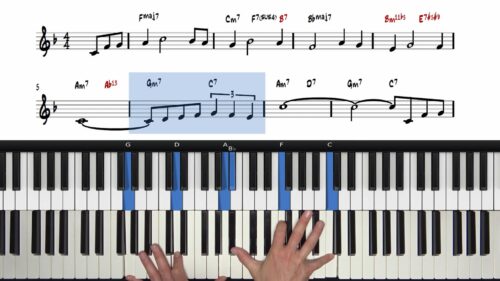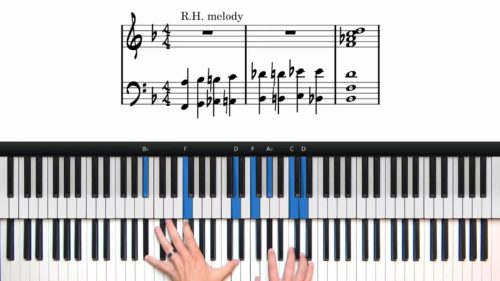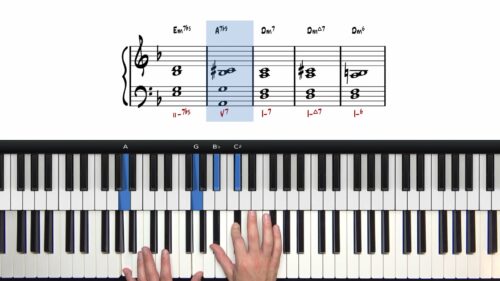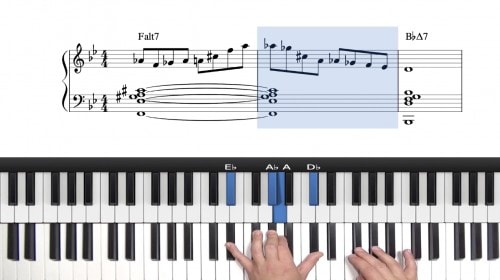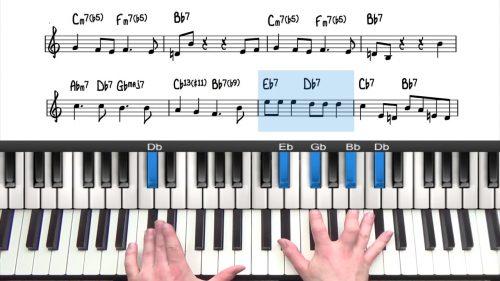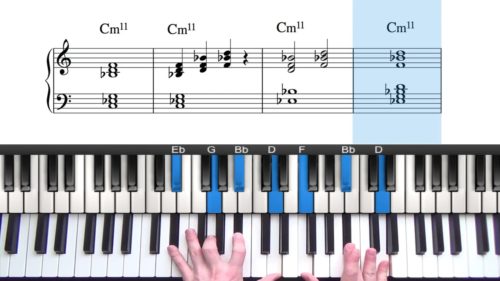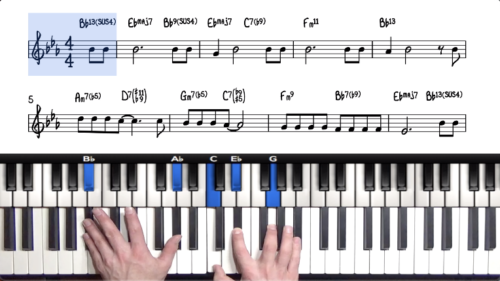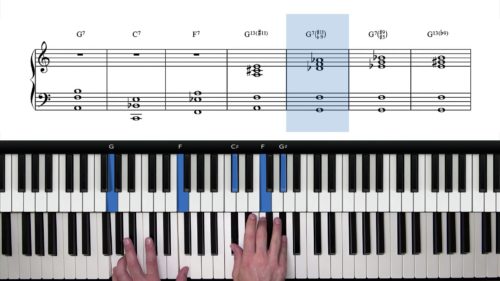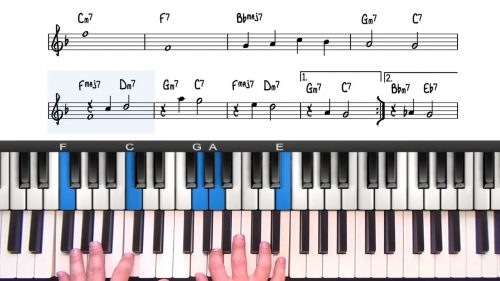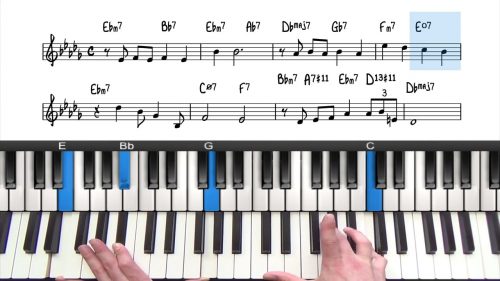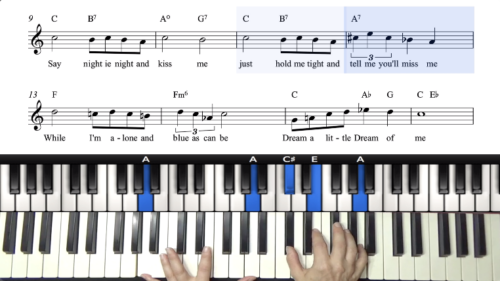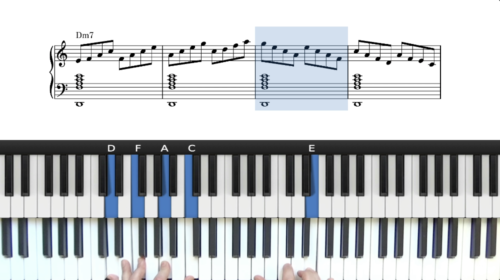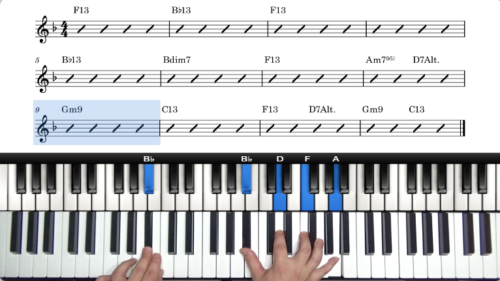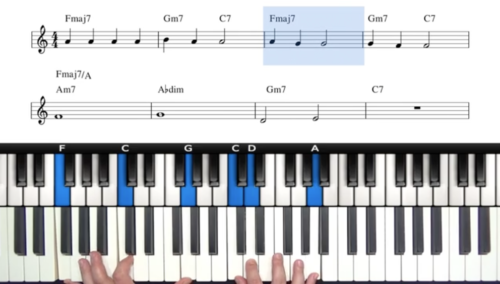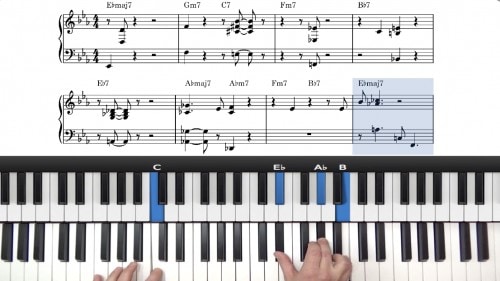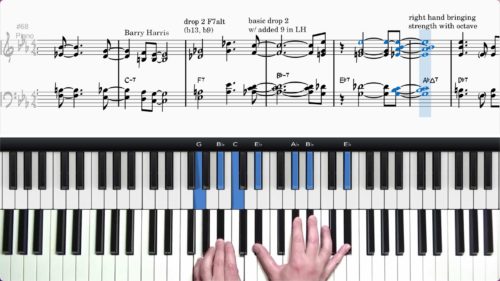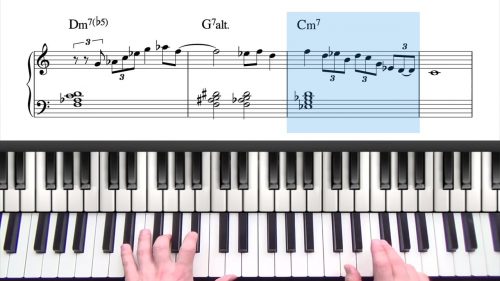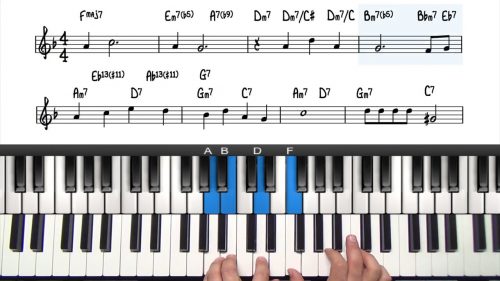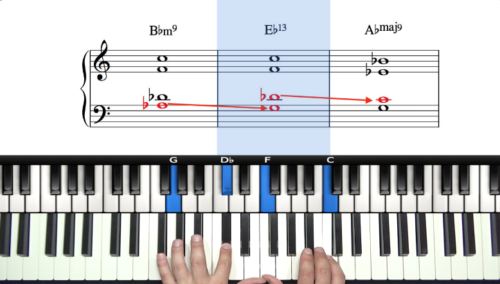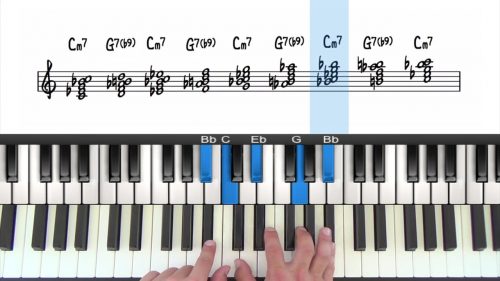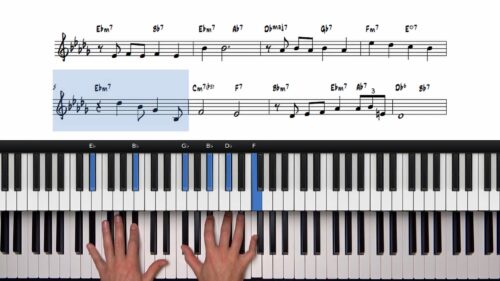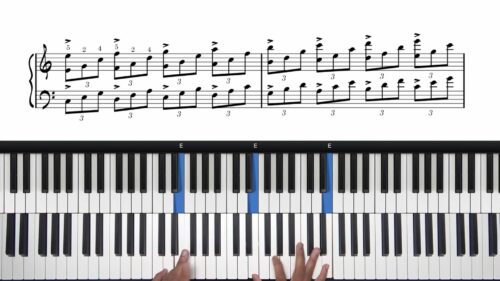Chord Progressions
There are a number of common chord progressions that you will find in virtually every jazz standard. After learning and memorising these important progressions you will have a much clearer understanding of jazz harmony.
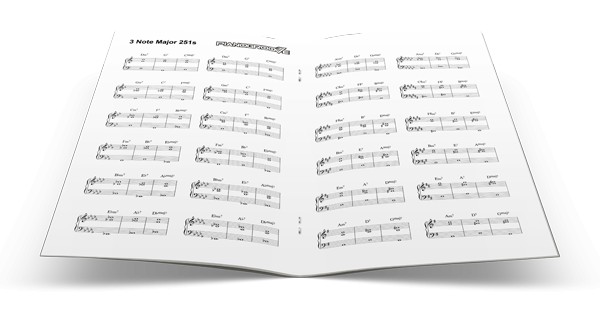
Major 251s All 12 Keys
The 251 progression is the most common progression in jazz. It is the DNA of jazz music and it must be learnt and memorised in all 12 keys.
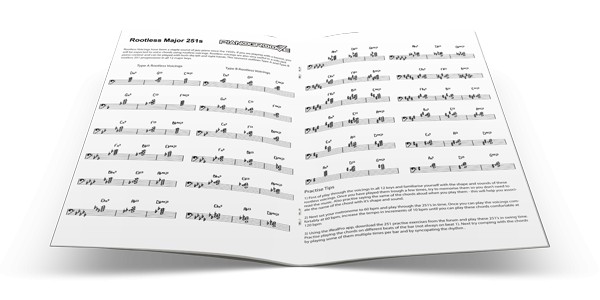
Rootless 251s All 12 Keys
Rootless voicings sound more professional then root based voicings and they voice lead much more smoothly in the context of a 251 progression.
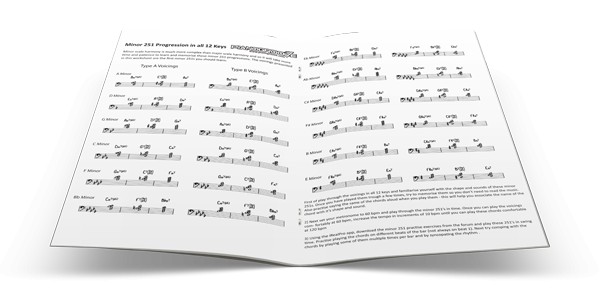
Minor 251s All 12 Keys
The trick with learning minor the 251 progression is to visualize the starting position, if you can find that the rest of the progression will fall into place.
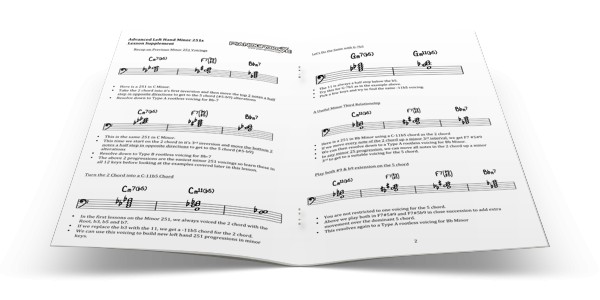
Advanced Minor 251s Notation
This variation of the minor 251 uses a -11b5 as the 2 chord. You have multiple options for alterations over the V chord including #5#9 and b9#5.
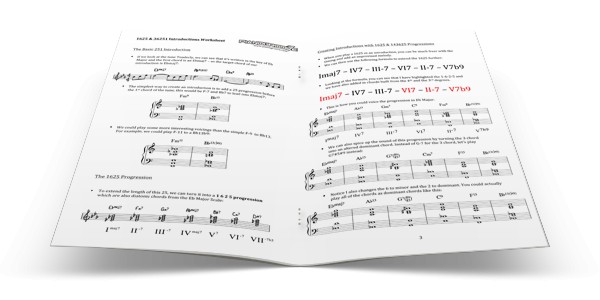
1625 & 36251 Formulas
Create killer introductions with these formulas. We provide the numeric notation so that you can build these sweet progressions in every key.

251 Comping Voicings
These 4 & 6-note comping voicings are suited to a trio or big band performance. We cover notation examples in both major and minor keys.
Learn the groove of authentic Brazilian Samba & Bossa Nova piano. Taught by 3–time Latin Grammy nominee and master pianist Jovino Santos Neto.
This course will get you reading lead sheets as quickly as possible. We explore “Moon River” & “Fly Me To The Moon” which are perfect songs for jazz piano newbies.
Learn the tune “Georgia On My Mind” in the soulful style of Ray Charles, starting with the most basic arrangement techniques and gradually increasing the complexity.
If you’re new to the blues, start here! You will learn the 12 bar blues form, basic voicings, how to count the slow blues, filling in space, and improvisation drills and exercises.
We explore the chord voicings, baselines and rhythms and then we add these 3 components together to create our first Bossa Nova groove.
In this course we explore the key of Bb Major. We start with beginner theory exercises and then we arrange the jazz standards: “My Foolish Heart” and “Autumn Leaves”.
Learn to play the slow blues in the key of C. We cover the basic chord changes, and then explore chord substitutions and improvisation over the 12 bar blues form.
Jovino’s 5-Minute Masterclasses tutorials are short, concise, and actionable lessons covering jazz and music theory with a Brazilian twist.
Master the key of Eb Major with these theory and jazz standard tutorials. You’ll learn common progressions and the tunes “Misty”, “Tenderly”, & “Over The Rainbow”.
This course contains a selection of beginner jazzy X-mas song tutorials. In these lessons you’ll learn to create beautifully jazzy versions of your favourite X-mas tunes.
Learn to play the 12 bar blues & 8 bar blues with Grammy winner Jon Cleary. Explore shuffle patterns, walking bass, licks, passing chords, turnarounds & improvisation.
This course explores the sounds, rhythms, & subtle nuances of Brazilian music. Continue your piano journey studying the colourful music of Brazil.
Designed for new students; we explore how to best use the PianoGroove website, the video player, and learning materials to supercharge your jazz piano journey.
Explore the history and development of New Orleans Piano with Grammy winner Jon Cleary. We cover 12/8 Grooves, Rhumba & Habanera Grooves, Blues, & Funk styles.
In this course we explore the use of triads for melodic creativity and improvisation. This concept was taught to Jovino by his mentor Hermeto Pascoal.
If you’re new to jazz piano… start here! We cover the foundations including scales, intervals, triads, 7th chords, the 251 progression, and beginner jazz standards.
In this course we explore harmony and voicings, guidance for playing hymns, and improvisation techniques for jazz standards, gospel hymns, and church songs.
In this course we explore choro; one of Brazil’s most popular music genres. We examine the basic choro groove and cover 2 famous choro compositions.
In this course we explore gospel chord progressions, hymns, time signatures, introductions, leading tones, holy shout music, and vocal accompaniment.
The 3 essential components of composing music are melody, harmony, and rhythm. A good composition will contain all three of these elements.
Expand your jazz repertoire with these simple but beautiful arrangements of the most famous and well-known jazz standards.
Extended chords are one of the hallmarks of jazz piano. We explore some useful extended chords and apply the voicings to 4 jazz standards.
This course contains short studies with Jovino Santos Neto covering chords and voicings, progressions, rhythmic drills, and practice exercises and tips.
In this step-by-step course we cover the blues form, bass lines, shuffle patterns, chord voicings, turnarounds & improv. Learn to play authentic Chicago Blues piano.
Practicing whole step 251s allows us to clearly visualise and execute sophisticated voicings, fills, and ornamentation for 251 progressions all 12 keys.
This course contains practice tips and tune studies from our blues live seminars. These lessons have in-video notation, PDF downloads, and transcriptions.
An in-depth study of rootless chord voicings; we create rootless 251 progressions in major and minor keys & apply to 3 well-know jazz standards.
We explore the core elements of improvisation such as: chord tone soloing, approach patterns, target tones and chromatic passing tones.
A selection of well-known festive arrangements. Share these jazzy Christmas tunes with your friends and family over the holiday season.
If you’re looking at this course, there’s a good chance it’s because you’ve heard boogie-woogie, and it immediately lit up something inside you. Welcome.
“How To Accompany Singers” is a vocal accompaniment course taught by Lyndol Descant – singer, jazz pianist, and composer based in Brooklyn, NYC.
Learn to play the F Jazz Blues using the Hammond Organ. We explore the B3’s anatomy & controls, walking bass lines, comping, turnarounds, & improvisation.
Learn how to play and improvise in the cocktail piano style. We cover chord voicings, chord progressions, and improvisation techniques for solo jazz piano.
We use the minor blues progression to explore pentatonic, blues scale, and modal improvisation. We apply these concepts to the famous tune “Mr P.C.”
In this course we explore stride drills for beginners, harmonising and reharmonising the melody, adding runs and fills, and techniques for improvisation and soloing.
Study the unique piano style of the New Orleans piano legend James Booker. We explore his harmonies, chord voicings and improvisational techniques.
Learn the nuances of minor harmony and improvisation using “In A Sentimental Mood”. We explore the 3 minor scales and their roles in improvisation.
This course explores the altered chord tones: b9s, #9s, #11s, and #5s / b13s. We then create upper structure triads and apply to 4 famous jazz standards.
Chord substitutions allow you to add interesting variations to a common progression. We explore tritone subs, suspended chords & passing chords.
In this series of short and concise tutorials, Hayden shares his knowledge of jazz harmony and tricks and tips when arranging for solo jazz piano.
In this course we continue our exploration into the jazzy Xmas song repertoire covering chord voicings, reharmonisation, and improvisation.
Expand your knowledge of functional harmony. We explore common voicings and progressions and then apply this information to well-known jazz standards.
Introductions are used to set the mood of a performance. We explore the theory and formulas and create killer intros for a number of jazz standards.
In this course we explore a range of voicings for major, minor and dominant chords. This will help you build full, solo piano arrangements.
Learn how to sing and play jazz standards with Lyndol Descant. Lyndol is a singing pianist, composer, and educator based in Brooklyn, NYC.
Learn advanced improvisation concepts from award wining jazz pianist Tuomo Uusitalo. These lessons cover scales, transcription, and improvised lines.
Learn advanced jazz piano harmony with one of NYCs finest jazz piano players. Tuomo shares his insight on chords, scales, progressions, & improvisation.
In this 6 lesson course, we’ll explore Tonal Harmony & Related Dominants with a unique approach to improvising over the Dominant – Tonic relationship.
This course contains intermediate to advanced level jazz standard arrangements. These arrangements are all for solo jazz piano performance.
Study the styles of the 7 most influential jazz pianists of all time: Bill Evans, Bud Powell, Herbie Hancock, McCoy Tyner, Thelonious Monk, Oscar Peterson, & Wynton Kelly.
Jazz piano comping and improvisation studies on the most famous jazz standards. Learn techniques for comping and improv on standards, blues, and modal tunes.
This course covers the foundations of jazz improvisation. We explore scales, arpeggios, chord tones, enclosures, approach patterns & swing rhythm.
This course covers walking bass, blues and gospel inspired jazz standards. We introduce the major blues scale to add soulful licks to your arrangements.
These lessons will prepare you for playing in a jazz band so that you know what to expect, and what is expected of you. Learn to comp and take a solo!
Block chords and drop 2 style voicings were used extensively by jazz pianists such as George Shearing, Bill Evans, Barry Harris and Red Garland.
Diminished Harmony is a huge area of study for jazz piano. Diminished Scales are versatile scales that are used extensively in jazz improvisation.
A course dedicated to elegant stride for jazz ballads. We use the harmonically rich tune “Body & Soul” to explore stride, melodic embellishment, fills, runs, and improvisation.
Learn to play Cuban piano styles with Latin Grammy nominee Elio Villafranca. We explore the clave, cascara, montuno patterns, mambo, and cha-cha-cha.
